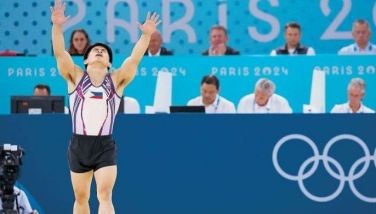Nature vs Nurture: Athletes’ genes
Every so often, the phrase, “it’s a sport in which Filipinos can excelâ€. That phrase has been used (and abused) in order to justify receipt of support from government and the private sector for a particular sporting event. When we were at the Philippine Sports Commission from 1995 to 1998, we were often at the receiving end of such statements especially when sports groups ask for financial assistance. What the basis of such a statement was in sports science, we never found or if we asked, we would hear sweeping remarks and general statements.
Now, comes some enlightenment from a book, “The Sports Gene: Inside the Science of Extraordinary Athletic Performance†written by David Epstein, senior writer of Sports Illustrated (SI). The book was given to us by American boxing promoter and lawyer, Sydney Hall, who came to Manila early this year with Sugar Shane Mosley to promote a project of the United Boxing Relief Fund. The project aims to raise funds for victims of various natural calamities, notably super typhoon Yolanda.
The front and back flaps of the book, presumably authored and designed by Jack Garceau serve as effective teasers and summary: “In high school, I (Epstein) wondered whether the Jamaican Americans who made our track team so successful might carry some special speed gene from their tiny island. In college, I ran against Kenyans, and wondered whether endurance genes might have traveled with them from East Africa. At the same time, I began to notice that five men on my own team could train next to one another, stride for stride, day after day, and nonetheless emerge as five entirely different runners. How could this be?â€
The essay in the flap continues: “We all knew a star athlete in high school. The one who made it look so easy. He was the starting quarterback and shortstop; she was all-state point guard and high jumper. Naturals. Or were they?â€
The author of the essay states the debate is as old as physical competition. Are stars like Usain Bolt (whom we saw at the IAAF world track and field championships in Moscow in August 2013 easily win the 100-meter run), Michael Phelps (6’4†Olympic swimming gold medalist, eight times over, with long wingspan and size 14 ultra-flexible flippers-feet) and Serena Williams (with her powerful arms and legs) genetic freaks put on earth to dominate their respective sports? Or are they simply normal people who overcame their biological limits through sheer force of will and obsessive training?
The book states that the “truth is far messier than a simple dichotomy between nature and nurture. In the decade since the sequencing of the human genome (Webster: total amount of genetic information of a living thing), researchers have begun to uncover how the relationship between biological endowments and a competitor’s training environment affects athleticism. Sports science has gradually entered the era of modern genetic research.
Epstein tackles, as stated in the flap, the great nature versus nurture debate and traces how far science has come in unraveling this riddle. He investigates the so-called 10,000 hour rule to uncover whether rigorous and consistent practice from a young age is the only route to athletic excellence.
Back to Epstein, the senior writer of SI tackles the great nature versus nurture debate and traces how far science has come in unraveling this riddle. He investigates the 10,000-hour rule to uncover whether rigorous and consistent practice from a young age is the only route to athletic excellence.
As the book promises, along the way, Epstein dispels many of our perceptions about why top athletes excel. He knows why some skills that we assume are innate, like the bullet-fast reactions of a baseball batter, are not, and why other characteristics that we assume are entirely voluntary, like an athlete’s will to train, might in fact have important genetic components.
Epstein explores fascinating topics like: “are black athletes genetically predetermined to dominate both sprinting and distance running, and are their abilities influenced by Africa’s geography? Are there genetic reasons to separate male and female athletes in competition? Should we test the genes of young children to determine if they are destined for stardom? Can genetic testing determine who is at risk of injury, brain damage or even death on the field?â€
The introduction of the book states that through on-the ground reporting from below the equator and above the Arctic Circle, conversations with leading scientists and Olympic champions, and interviews with athletes who have rare genetic mutations or physical traits, Epstein forces us to rethink the very nature of athleticism.
Epstein’s bio-sketch states he covers sports science, medicine and Olympic sports for SI. His investigative pieces are among the magazine’s most high-profile stories. An avid runner, he earned All-East honors on Columbia University’s varsity track squad, and has a master’s degree in environmental science.
In next week’s column we shall discuss the 10,000-hour rule and use as an example Dan McLaughlin, an American commercial photographer who quit his job to take up golf in 2010. McLaughlin hopes to become a professional golfer and qualify for the Tour through 10,000 hours of planned and systematic practice.
- Latest
- Trending






























